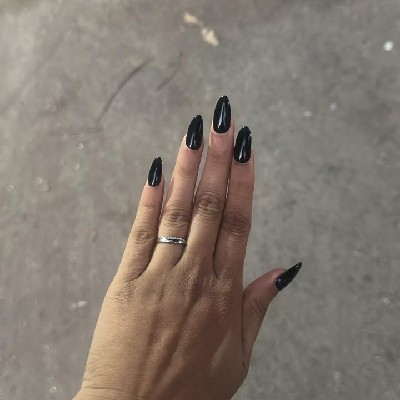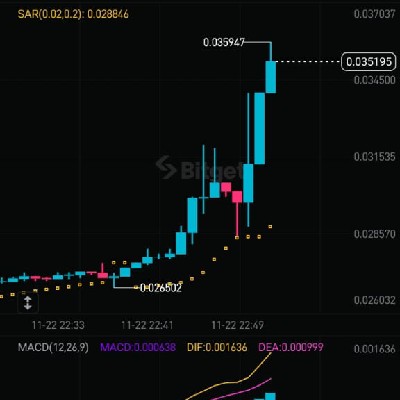
Cena Shiba Inu TREATTREAT
PLN
Nienotowany
zł0.002583PLN
+1.38%1D
Cena Shiba Inu TREAT (TREAT) w Złoty polski wynosi zł0.002583 PLN.
Dane pochodzą od zewnętrznych dostawców. Ta strona i podane na niej informacje nie promują żadnej konkretnej kryptowaluty. Chcesz handlować notowanymi monetami? Kliknij tutaj
Zarejestruj sięWykres cen Shiba Inu TREAT (PLN/TREAT)
Ostatnia aktualizacja: 2025-12-22 03:22:38(UTC+0)
Konwerter TREAT na PLN
TREAT
PLN
1 TREAT = 0.002583 PLN. Bieżąca cena konwersji 1 Shiba Inu TREAT (TREAT) na PLN wynosi 0.002583. Stawka ta ma charakter wyłącznie informacyjny.
Bitget oferuje najniższe opłaty transakcyjne spośród wszystkich głównych platform handlowych. Im wyższy poziom VIP, tym korzystniejsze stawki.
Cena Shiba Inu TREAT w PLN na żywo dzisiaj
Aktualny dzisiejszy kurs Shiba Inu TREAT wynosi zł0.002583 PLN, a bieżąca kapitalizacja rynkowa wynosi zł0.00. Cena Shiba Inu TREAT wzrosła o 1.38% w ciągu ostatnich 24 godzin, a 24-godzinny wolumen obrotu wynosi zł1.14M. Współczynnik konwersji TREAT/PLN (Shiba Inu TREAT na PLN) jest aktualizowany w czasie rzeczywistym.
Ile kosztuje 1 Shiba Inu TREAT w Złoty polski?
W tej chwili cena 1 Shiba Inu TREAT (TREAT) w Złoty polski wynosi zł0.002583 PLN. Możesz teraz kupić 1 TREAT za zł0.002583 lub 3,871.65 TREAT za zł10. W ciągu ostatnich 24 godzin najwyższa cena TREAT do PLN wynosiła zł0.002832 PLN, a najniższa cena TREAT do PLN wynosiła zł0.002538 PLN.
Czy uważasz, że cena Shiba Inu TREAT dziś wzrośnie czy spadnie?
Łączna liczba głosów:
Wzrost
0
Spadek
0
Dane głosowania są aktualizowane co 24 godziny. Odzwierciedlają one prognozy społeczności dotyczące trendu ceny Shiba Inu TREAT i nie należy ich traktować jako porady inwestycyjnej.
Shiba Inu TREAT – dane rynkowe
Wydajność cenowa (24 godz.)
24 godz.
Najniższ. z 24 godz.: zł0Najwyższ. z 24 godz.: zł0
Najwyższa dotychczasowa wartość (ATH):
zł0.07088
Zmiana ceny (24 godz.):
+1.38%
Zmiana ceny (7 d.):
-21.80%
Zmiana ceny (1 r.):
-69.68%
Ranking rynkowy:
#3889
Kapitalizacja rynkowa:
--
W pełni rozwodniona kapitalizacja rynkowa:
--
Wolumen (24h):
zł1,142,270.2
Podaż w obiegu:
-- TREAT
Maks. podaż:
--
Historia cen Shiba Inu TREAT (PLN)
Cena monety Shiba Inu TREAT odnotowała -69.68% w ciągu ostatniego roku. Najwyższa cena monety wyrażona w PLN w ostatnim roku wyniosła zł0.07088, a najniższa cena monety wyrażona w PLN w ostatnim roku wyniosła zł0.001834.
CzasZmiana ceny (%) Najniższa cena
Najniższa cena Najwyższa cena
Najwyższa cena 
 Najniższa cena
Najniższa cena Najwyższa cena
Najwyższa cena 
24h+1.38%zł0.002538zł0.002832
7d-21.80%zł0.002459zł0.003280
30d+21.70%zł0.001834zł0.005264
90d-39.76%zł0.001834zł0.005264
1y-69.68%zł0.001834zł0.07088
Cały okres-93.27%zł0.001834(2025-12-02, 20 dni temu)zł0.07088(2025-01-25, 331 dni temu)
Jaka jest najwyższa cena Shiba Inu TREAT?
Historyczne maksimum TREAT (ATH) w: PLN wyniosło zł0.07088 i zostało odnotowane 2025-01-25. W porównaniu z historycznym maksimum Shiba Inu TREAT, obecna cena Shiba Inu TREAT spadła o 96.36%.
Jaka jest najniższa cena Shiba Inu TREAT?
Historyczne minimum TREAT (ATL) w: PLN wyniosło zł0.001834 i zostało odnotowane 2025-12-02. W porównaniu z historycznym minimum Shiba Inu TREAT, obecna cena Shiba Inu TREAT wzrosła o 40.83%.
Prognoza ceny Shiba Inu TREAT
Kiedy jest dobry moment na zakup TREAT? Czy zalecane jest teraz kupno lub sprzedaż TREAT?
Podejmując decyzję o kupnie lub sprzedaży TREAT, należy najpierw rozważyć własną strategię handlową. Różnić się będzie także aktywność handlowa traderów długoterminowych i krótkoterminowych. Analiza techniczna TREAT Bitget może stanowić punkt odniesienia dla handlu.
Zgodnie z 4-godzinna analiza techniczna TREAT, sygnałem transakcyjnym jest Sprzedaj.
Zgodnie z Dzienna analiza techniczna TREAT, sygnałem transakcyjnym jest Sprzedaj.
Zgodnie z Tygodniowa analiza techniczna TREAT, sygnałem transakcyjnym jest Sprzedaj.
Jaka będzie cena TREAT w 2026?
W 2026, przy założeniu prognozowanego rocznego tempa wzrostu na poziomie +5%, oczekuje się, że cena Shiba Inu TREAT (TREAT) osiągnie zł0.002776; w oparciu o prognozowaną cenę na ten rok, skumulowany zwrot z inwestycji w przypadku zainwestowania i trzymania środków w wysokości Shiba Inu TREAT do końca 2026 osiągnie +5%. Więcej szczegółów można znaleźć tutaj: Prognozy ceny Shiba Inu TREAT na lata 2025, 2026 oraz 2030–2050.Jaka będzie cena TREAT w roku 2030?
W 2030 r., przy założeniu prognozowanego rocznego tempa wzrostu na poziomie +5%, oczekuje się, że cena Shiba Inu TREAT (TREAT) osiągnie zł0.003374; w oparciu o prognozowaną cenę na ten rok, skumulowany zwrot z inwestycji w przypadku zainwestowania i trzymania środków w wysokości Shiba Inu TREAT do końca 2030 r. osiągnie 27.63%. Więcej szczegółów można znaleźć tutaj: Prognozy ceny Shiba Inu TREAT na lata 2025, 2026 oraz 2030–2050.
Popularne promocje
Globalne ceny Shiba Inu TREAT
Jaka jest obecna wartość Shiba Inu TREAT w innych walutach? Ostatnia aktualizacja: 2025-12-22 03:22:38(UTC+0)
TREAT do ARS
Argentine Peso
ARS$1.04TREAT do CNYChinese Yuan
¥0.01TREAT do RUBRussian Ruble
₽0.06TREAT do USDUnited States Dollar
$0TREAT do EUREuro
€0TREAT do CADCanadian Dollar
C$0TREAT do PKRPakistani Rupee
₨0.2TREAT do SARSaudi Riyal
ر.س0TREAT do INRIndian Rupee
₹0.06TREAT do JPYJapanese Yen
¥0.11TREAT do GBPBritish Pound Sterling
£0TREAT do BRLBrazilian Real
R$0Często zadawane pytania
Jaka jest obecna cena Shiba Inu TREAT?
Bieżąca cena monety Shiba Inu TREAT wynosi zł0 za (TREAT/PLN), przy czym bieżąca kapitalizacja rynkowa wynosi zł0 PLN. Wartość monety Shiba Inu TREAT podlega częstym wahaniom, ponieważ rynek kryptowalut jest aktywny przez całą dobę. Bieżąca cena monety Shiba Inu TREAT w czasie rzeczywistym i jej dane historyczne są dostępne na Bitget.
Czym jest 24-godzinny wolumen obrotu Shiba Inu TREAT?
W ciągu ostatnich 24 godzin wolumen obrotu Shiba Inu TREAT wyniósł zł1.14M.
Jaka jest najwyższa dotychczasowa wartość Shiba Inu TREAT?
Najwyższa dotychczasowy cena Shiba Inu TREAT to zł0.07088. Ta najwyższa dotychczasowa cena jest najwyższą ceną dla Shiba Inu TREAT od czasu jego wprowadzenia.
Czy mogę kupić Shiba Inu TREAT na Bitget?
Tak, Shiba Inu TREAT jest obecnie dostępne na scentralizowanej giełdzie Bitget. Aby uzyskać bardziej szczegółowe instrukcje, zapoznaj się z naszym pomocnym przewodnikiem Jak kupić shiba-inu-treat .
Czy mogę uzyskać stały dochód z inwestycji w Shiba Inu TREAT?
Oczywiście Bitget zapewnia platforma do handlu strategicznego, z inteligentnymi botami handlowymi do automatyzacji transakcji i osiągania zysków.
Gdzie mogę kupić Shiba Inu TREAT z najniższą opłatą?
Z przyjemnością informujemy, że platforma do handlu strategicznego jest już dostępny na giełdzie Bitget. Bitget oferuje wiodące w branży opłaty transakcyjne i głębokość, aby zapewnić inwestorom zyskowne inwestycje.
Ceny powiązanych kryptowalut
Cena Stellar (PLN)Cena XRP (PLN)Cena OFFICIAL TRUMP (PLN)Cena Ethereum (PLN)Cena Worldcoin (PLN)Cena dogwifhat (PLN)Cena Kaspa (PLN)Cena Smooth Love Potion (PLN)Cena Terra (PLN)Cena Shiba Inu (PLN)Cena Dogecoin (PLN)Cena Pepe (PLN)Cena Cardano (PLN)Cena Bonk (PLN)Cena Toncoin (PLN)Cena Pi (PLN)Cena Fartcoin (PLN)Cena Bitcoin (PLN)Cena Litecoin (PLN)Cena WINkLink (PLN)
Gdzie mogę kupić kryptowaluty?
Sekcja wideo — szybka weryfikacja, szybki handel

Jak ukończyć weryfikację tożsamości na Bitget i zabezpieczyć się przed oszustwami?
1. Zaloguj się na swoje konto Bitget.
2. Jeśli jesteś nowym użytkownikiem Bitget, obejrzyj nasz przewodnik poświęcony tworzeniu konta.
3. Najedź kursorem na ikonę swojego profilu, kliknij opcję „Nie zweryfikowano” i wybierz „Zweryfikuj”.
4. Wybierz kraj lub region wydający dokument tożsamości oraz jego rodzaj, a następnie postępuj zgodnie z instrukcjami.
5. Wybierz opcję „Weryfikacja mobilna” lub „PC” w zależności od preferencji.
6. Podaj swoje dane, prześlij kopię dokumentu tożsamości i zrób selfie.
7. Prześlij swoje zgłoszenie i gotowe — weryfikacja tożsamości zakończona.
Kup Shiba Inu TREAT za 1 PLN
Pakiet powitalny o wartości 6200 USDT dla nowych użytkowników Bitget!
Kup Shiba Inu TREAT teraz
Inwestycje w kryptowaluty, w tym kupowanie Shiba Inu TREAT online za pośrednictwem Bitget, podlegają ryzyku rynkowemu. Bitget zapewnia łatwe i wygodne sposoby kupowania Shiba Inu TREAT. Dokładamy wszelkich starań, aby w pełni informować naszych użytkowników o każdej kryptowalucie, którą oferujemy na giełdzie. Nie ponosimy jednak odpowiedzialności za skutki, które mogą wyniknąć z kupna Shiba Inu TREAT. Ta strona i wszelkie zawarte w niej informacje nie stanowią poparcia dla żadnej konkretnej kryptowaluty.
Konwerter TREAT na PLN
TREAT
PLN
1 TREAT = 0.002583 PLN. Bieżąca cena konwersji 1 Shiba Inu TREAT (TREAT) na PLN wynosi 0.002583. Stawka ta ma charakter wyłącznie informacyjny.
Bitget oferuje najniższe opłaty transakcyjne spośród wszystkich głównych platform handlowych. Im wyższy poziom VIP, tym korzystniejsze stawki.
TREAT – źródła
Oceny Shiba Inu TREAT
4.6
Kontrakty:
0xa02c...db599f4(Ethereum)
Bitget Insights

PRAWIN09
2d.
⚠️ Bitget is delisting 12 spot trading pairs on Dec 26, 2025!
Affected pairs: PINGPONG/USDT, MYRO/USDT, DOLO/USDT, SWTCH/USDT, SKATE/USDT, BOOST/USDT, FON/USDT, GTC/USDT, RAD/USDT, TREAT/USDT, GEAR/USDT, NEXA/USDT. 📉
Manage your orders & transfers before the deadline! 🔁
MYRO0.00%
TREAT0.00%

Kenniy
2025/12/13 18:47
$TREAT is showing solid bullish momentum after a clean breakout, supported by strong volume. Price is up over 100% in the last 24 hours and remains well above its short-, mid-, and long-term moving averages, keeping the uptrend firmly intact. At the same time, Bitget is standing out as the only major exchange running a US Launchpool, where staking BGB lets users earn from a 17.5M $US reward pool a straightforward way to generate extra US while holding BGB, especially with few incentives available elsewhere right now.
$JUV
BGB-0.22%
TREAT0.00%

chanaka🇱🇰
2025/12/13 15:30
treat
$TREAT now
TREAT0.00%

Ahamedalomshahin
2025/12/13 11:36
$SNEK buy now 10x,🚀
Sell $TREAT 👉 Buy $SNEK 10X PUMP Loading 🚀🚀
🚨 Tp 🎯 0.0015000$+
TREAT0.00%
SNEK+4.37%

Ahamedalomshahin
2025/12/13 11:16
$SNEK buy now 10x🚀
Sell $TREAT 👉 Buy $SNEK 10X PUMP Loading 🚀🚀
🚨 Tp 🎯 0.0015000$+
TREAT0.00%
SNEK+4.37%
Ceny nowo notowanych monet na Bitget








